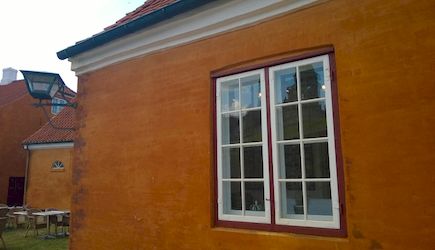
Limestone is a beautiful, lively and spirited Lime colour
Are you in search of “living colours” which naturally change their hue? Then try painting with Limestone colour.
In Scandinavia the Limestone colour surface treatment was the most popular facade treatment for both old and new buildings over the past 20-30 years. The yellow whitewash has a characteristically warm rust yellow hue. Over time, the hue changes, it becomes a darker “washed effect” or "flames" on the wall’s surface. As a result of moisture in the air, limestone colour will become “reddish-brown” in its overall appearance over time. Thus, it will constitute a beautiful mix of the hue levels achieved in the same colour. Depending on the mixing ratio of the lime as well as the moisture conditions in the masonry, the Limestone colour can vary. Limestone yellow used as lime paint differs from other whitewash types in the fact that the yellow Limestone layer is chemically produced. The addition of green crystals (ferrous sulfate) in lime is a new colour scheme. Usually one would add lime whitewashing pigments, thereby determining the colour of the lime coating. Limestone paint behaves differently than coloured lime. If you mix the lime with Limestone, the result is a green mixture. After applying this mixture on the wall surface, it changes its colour from light green to rusty brown. Upon drying, the colour then produces a warm yellow appearance.
